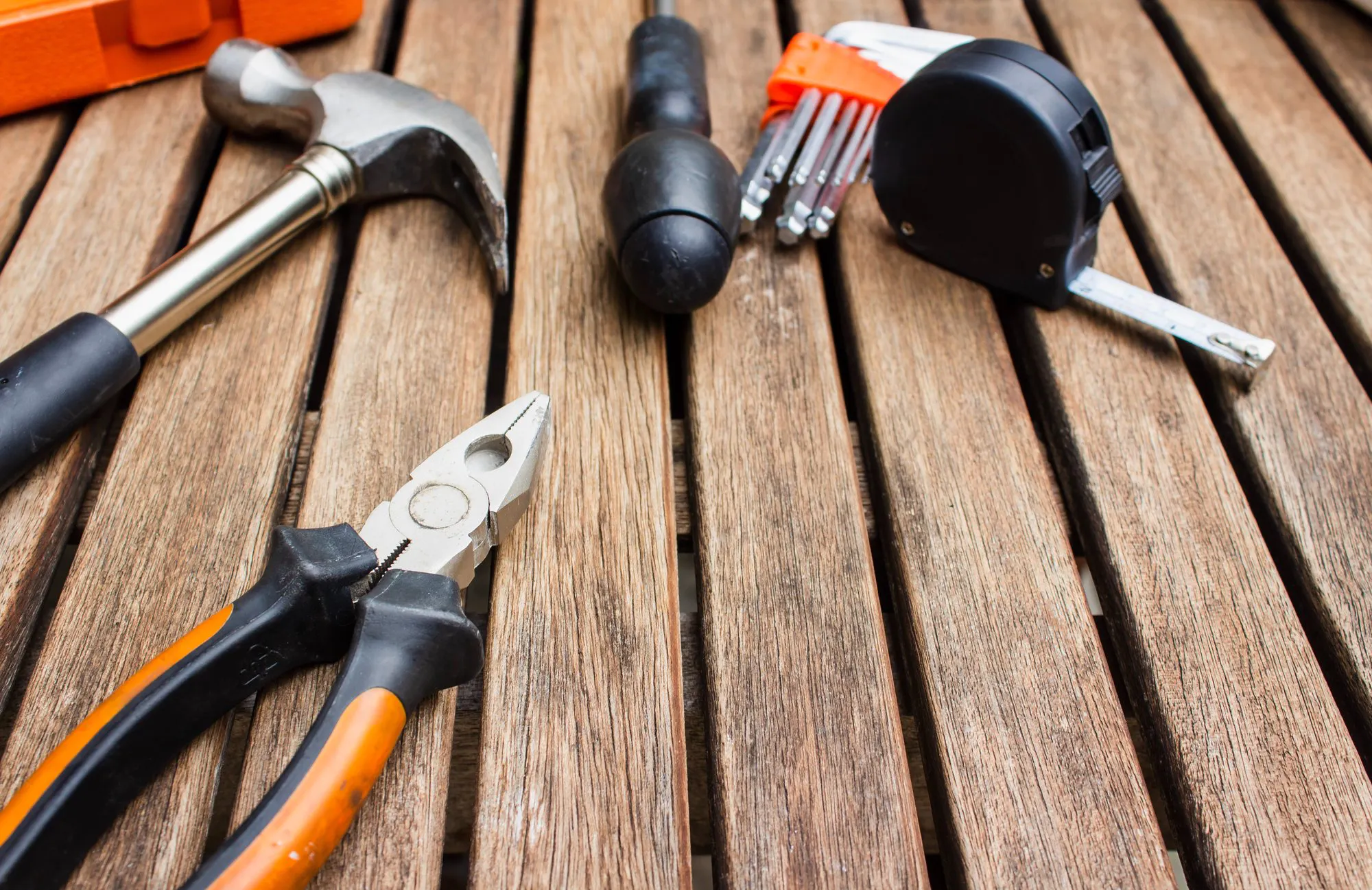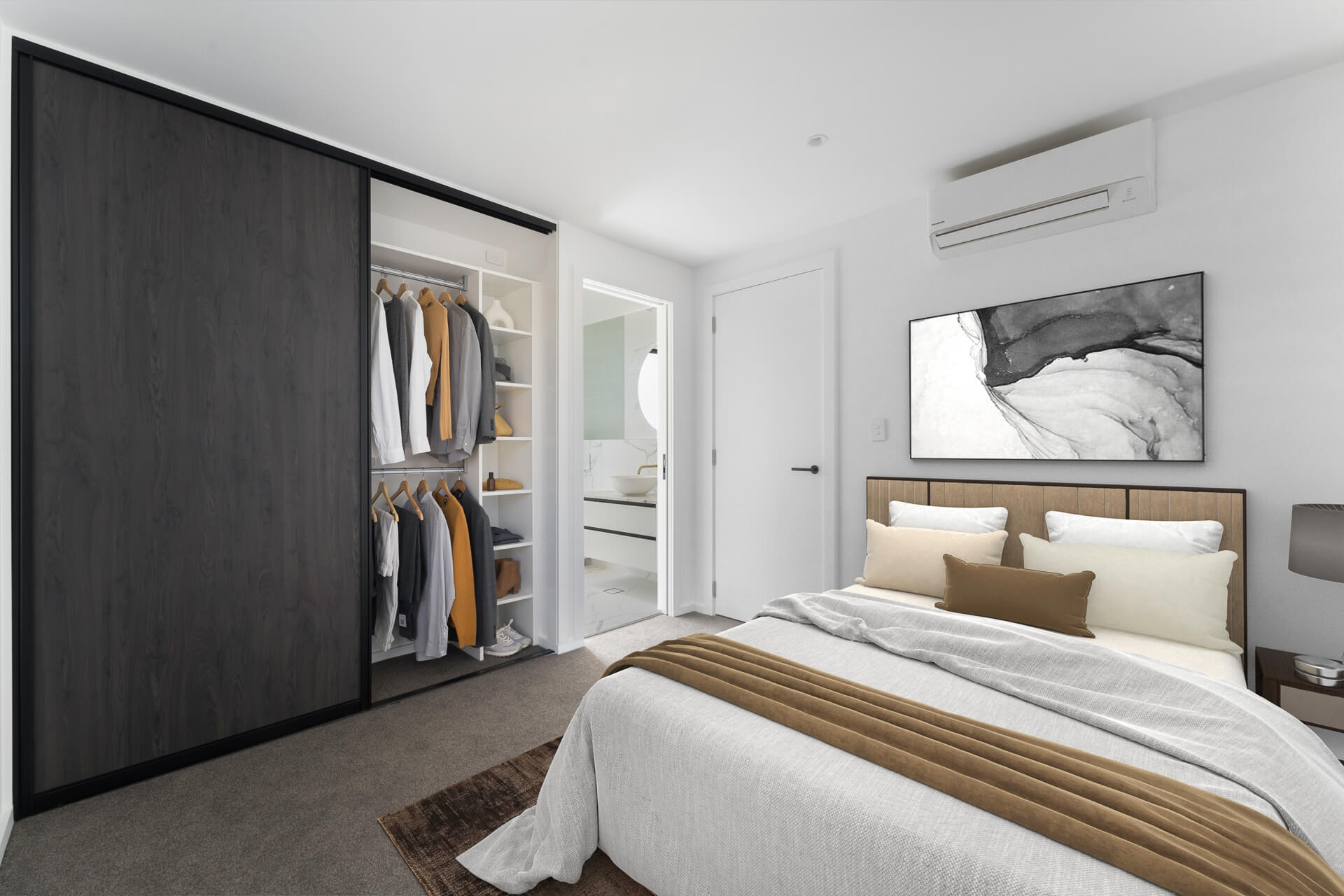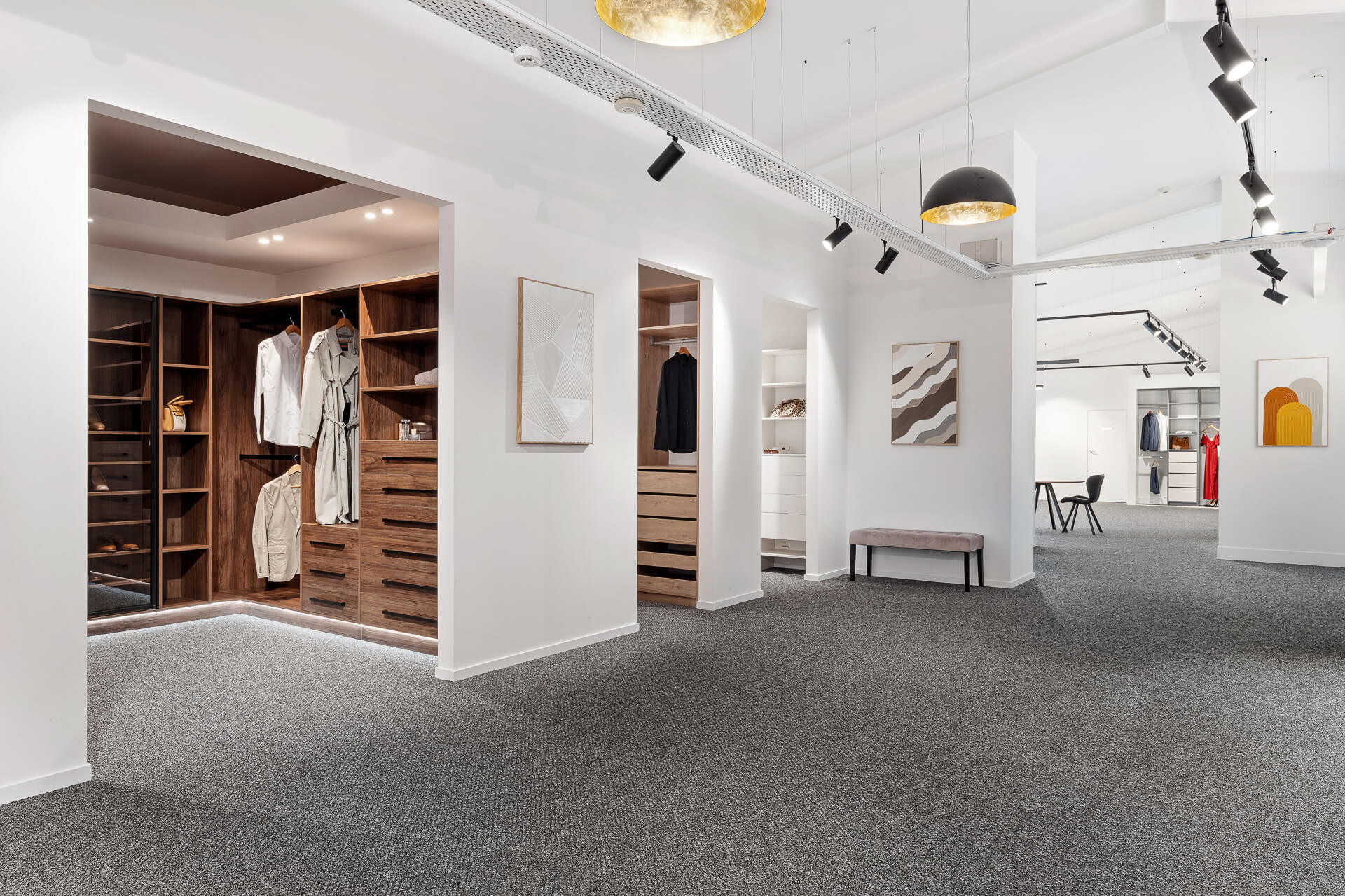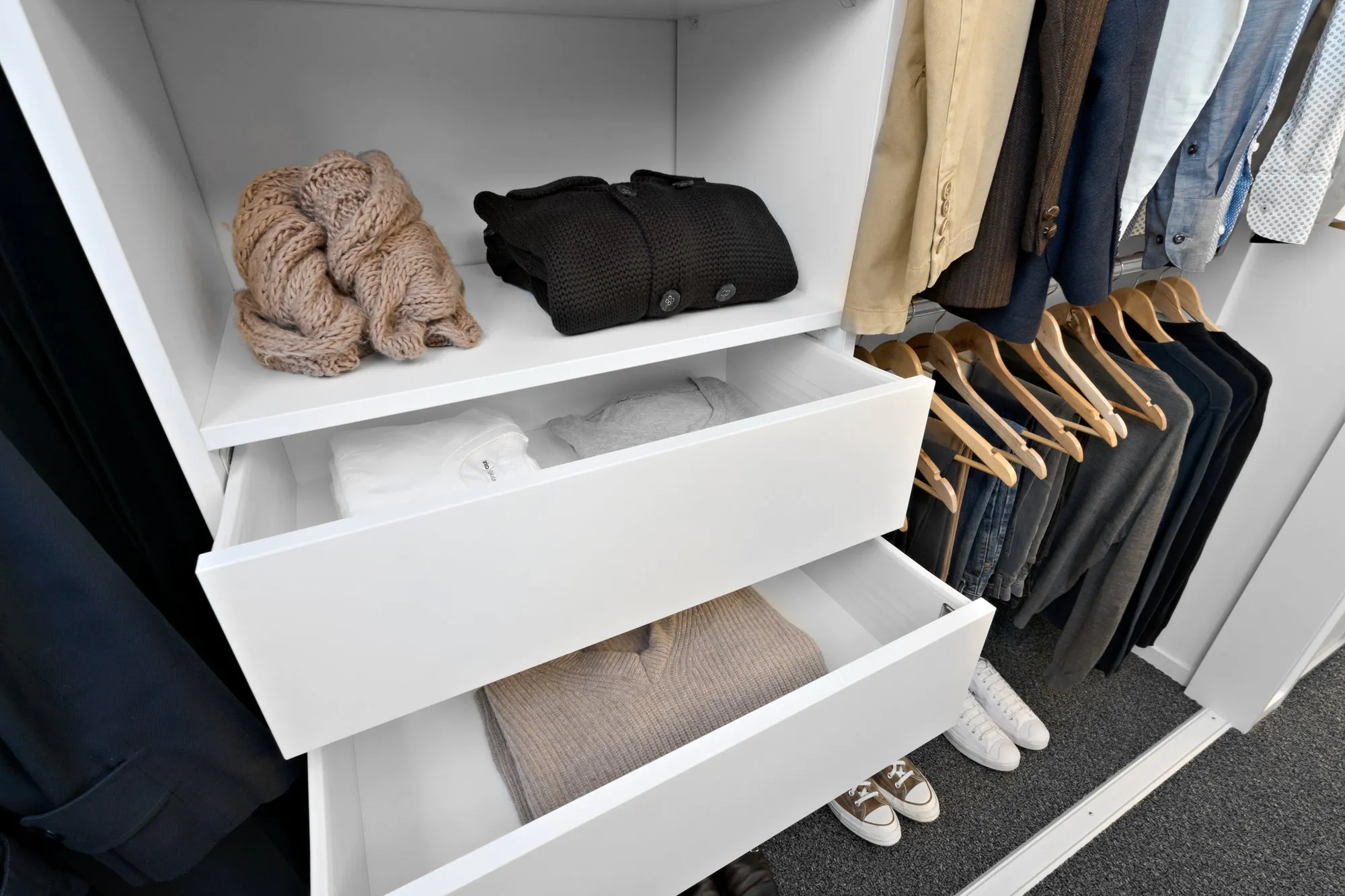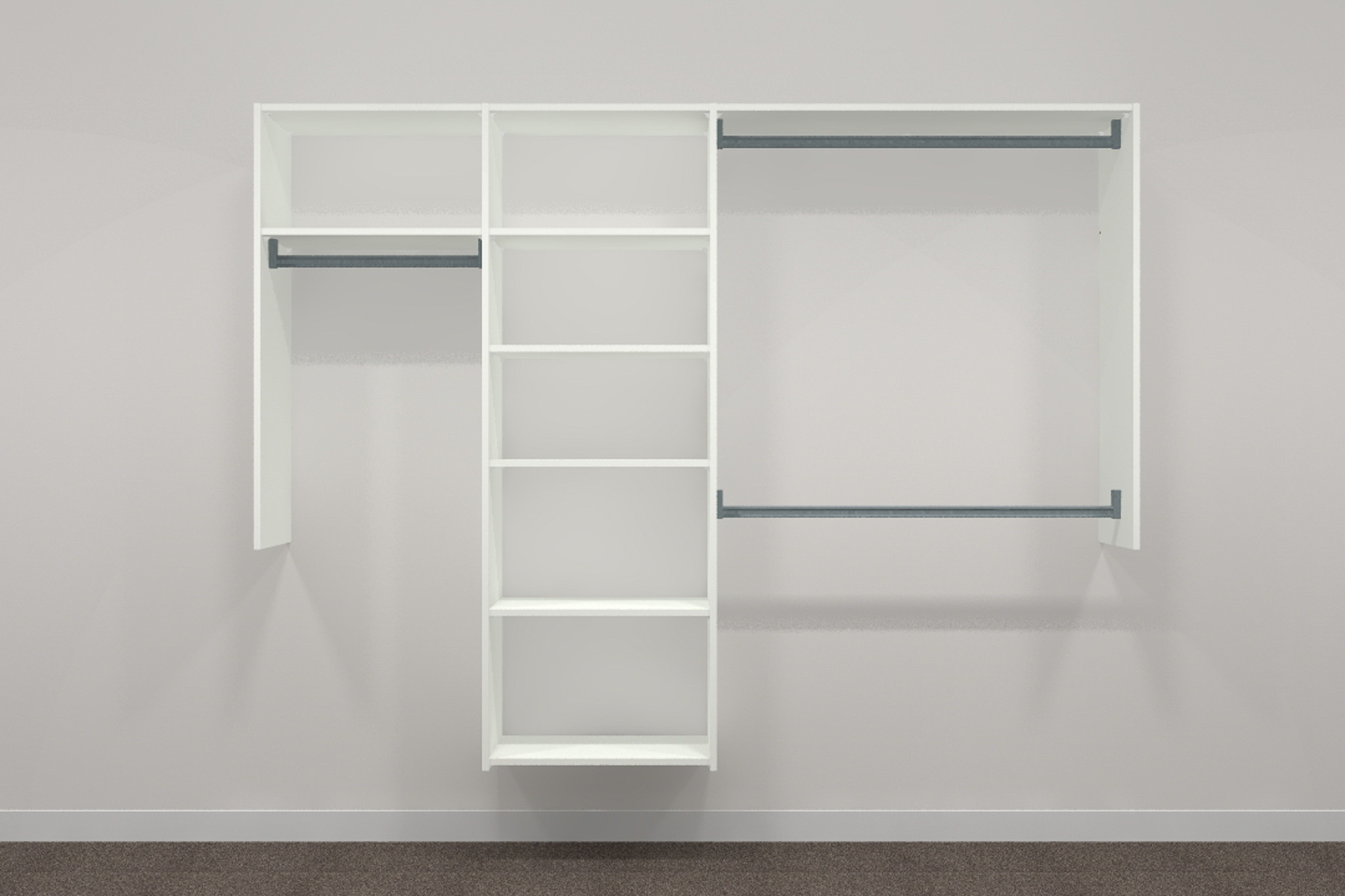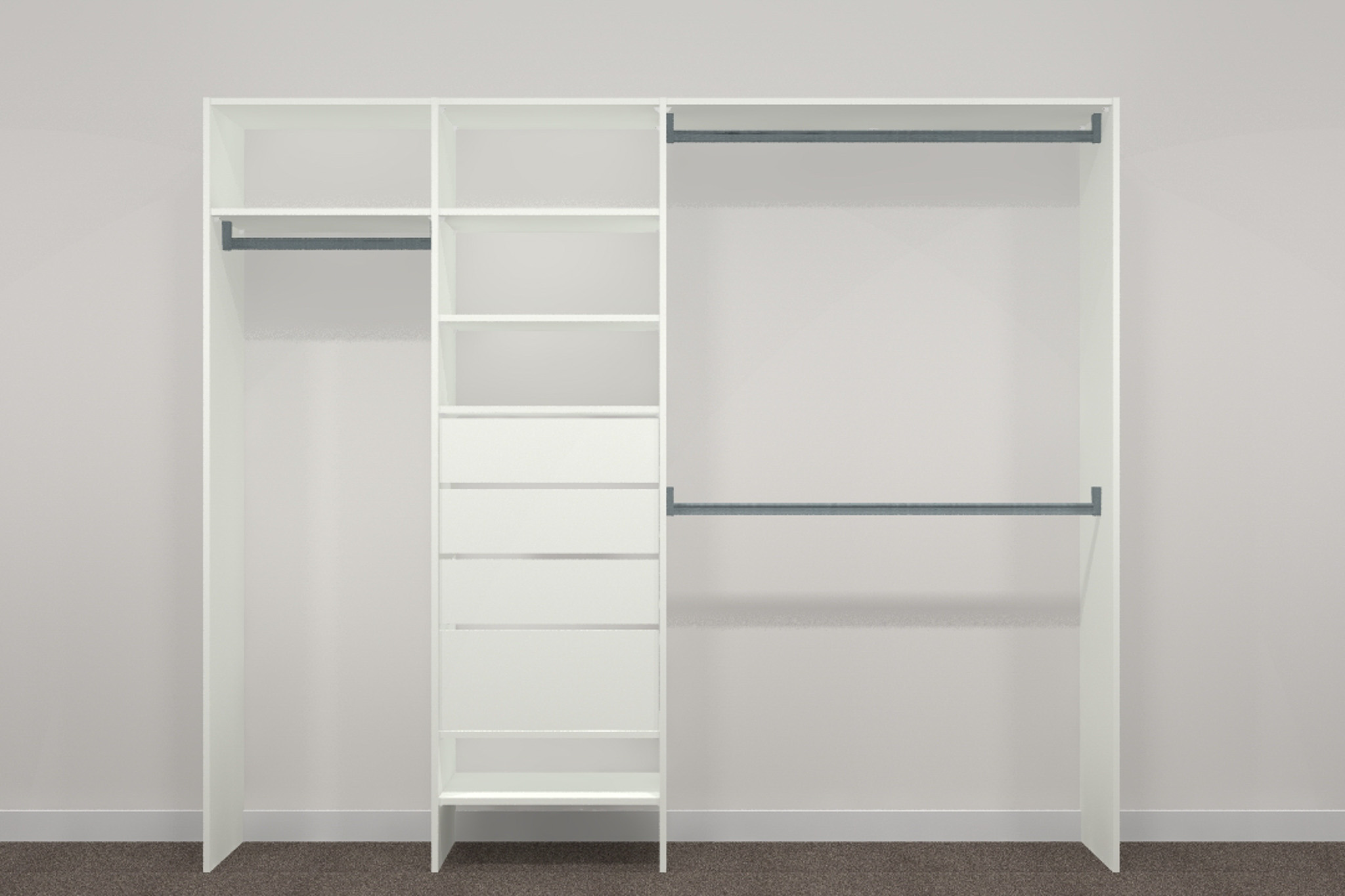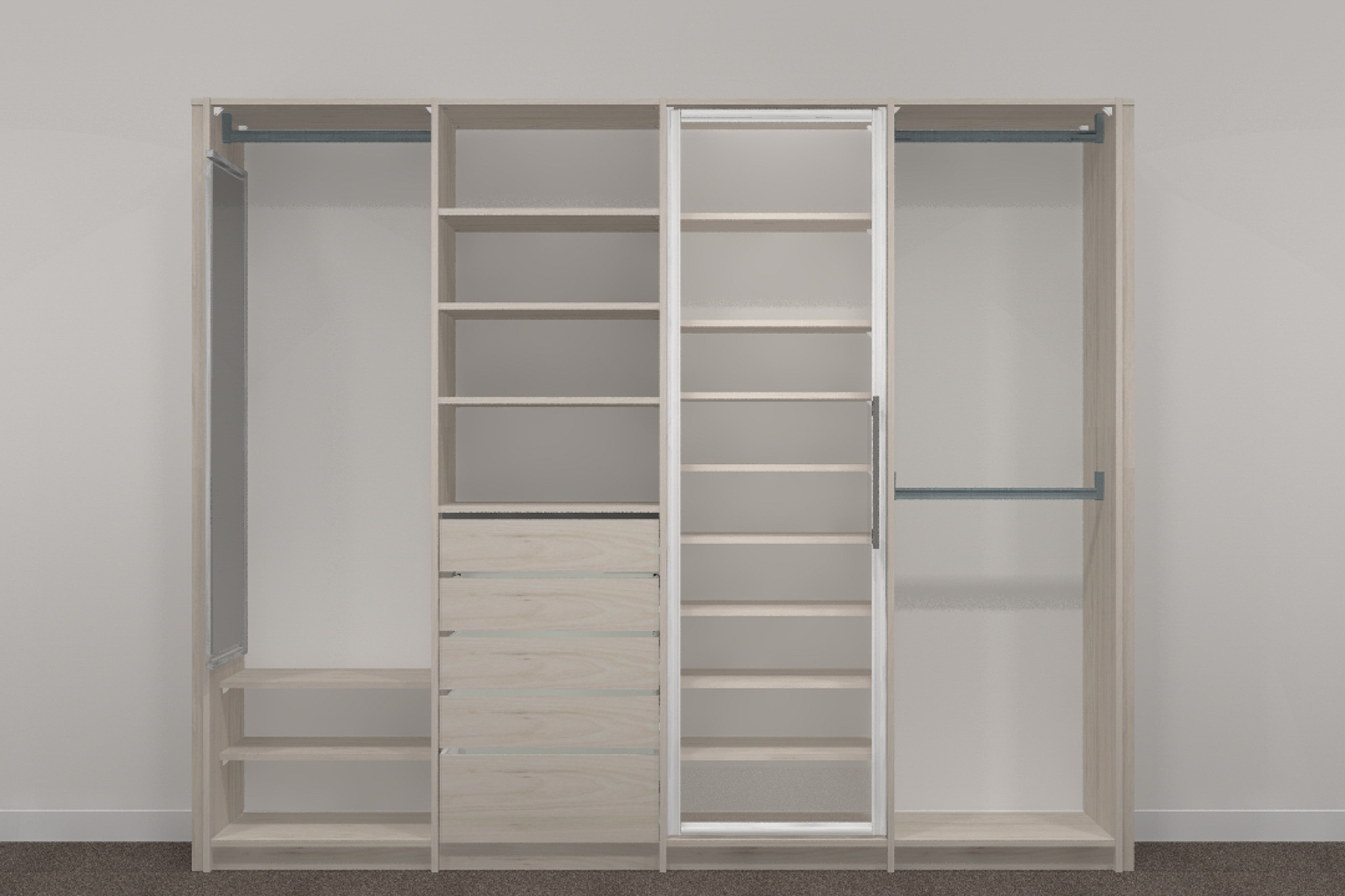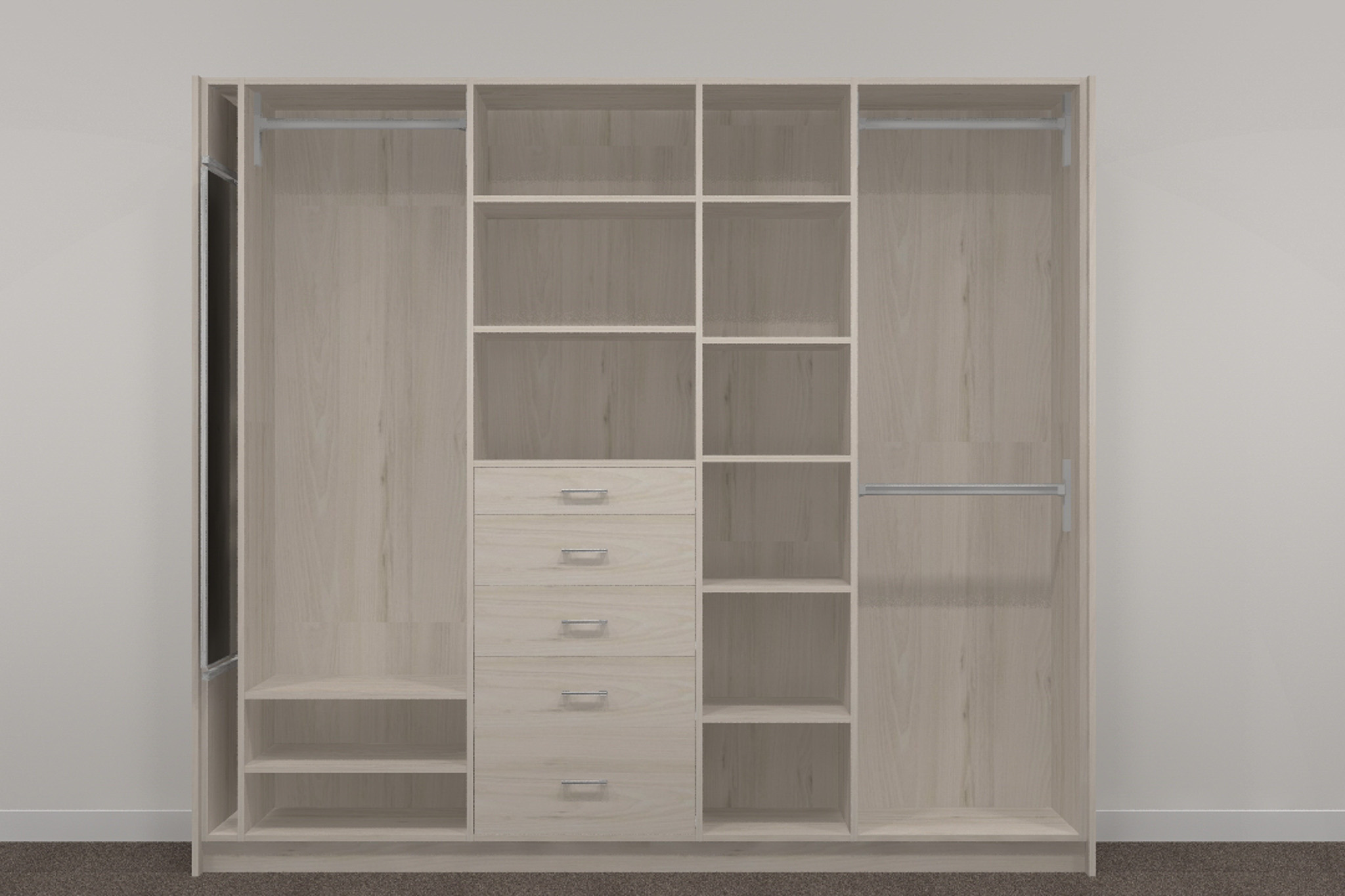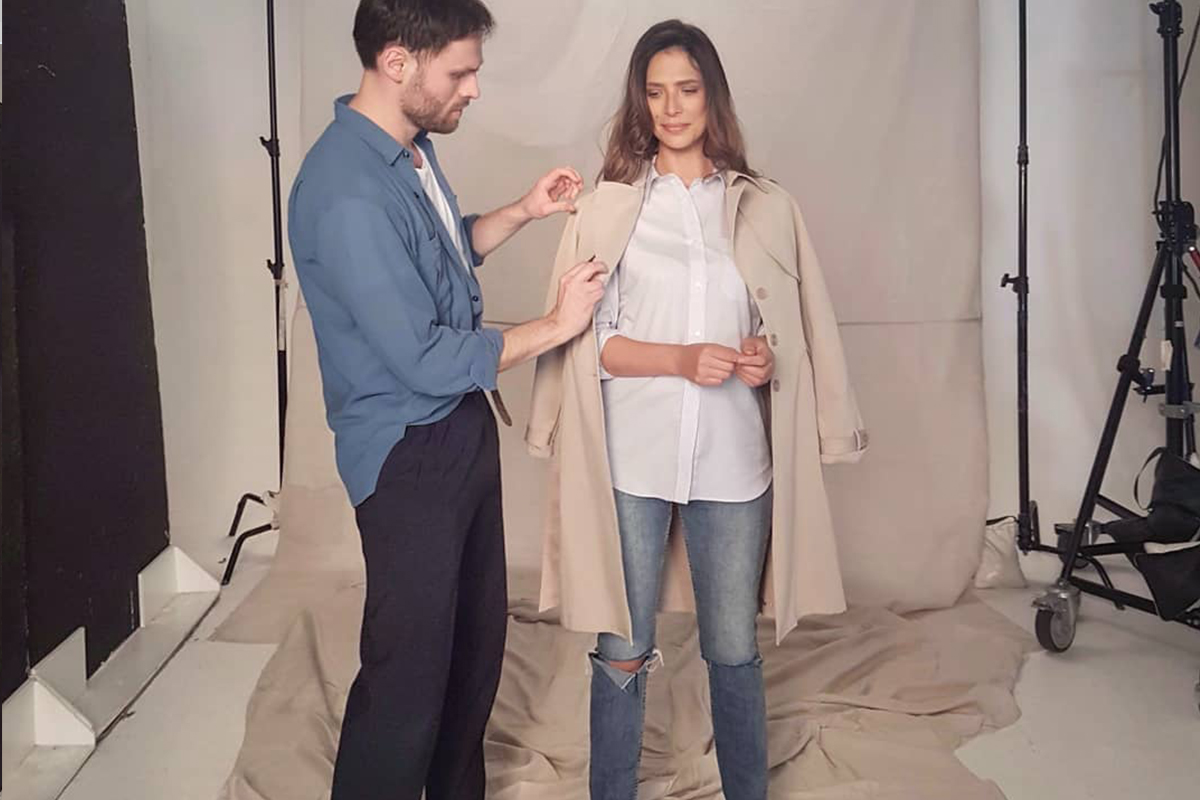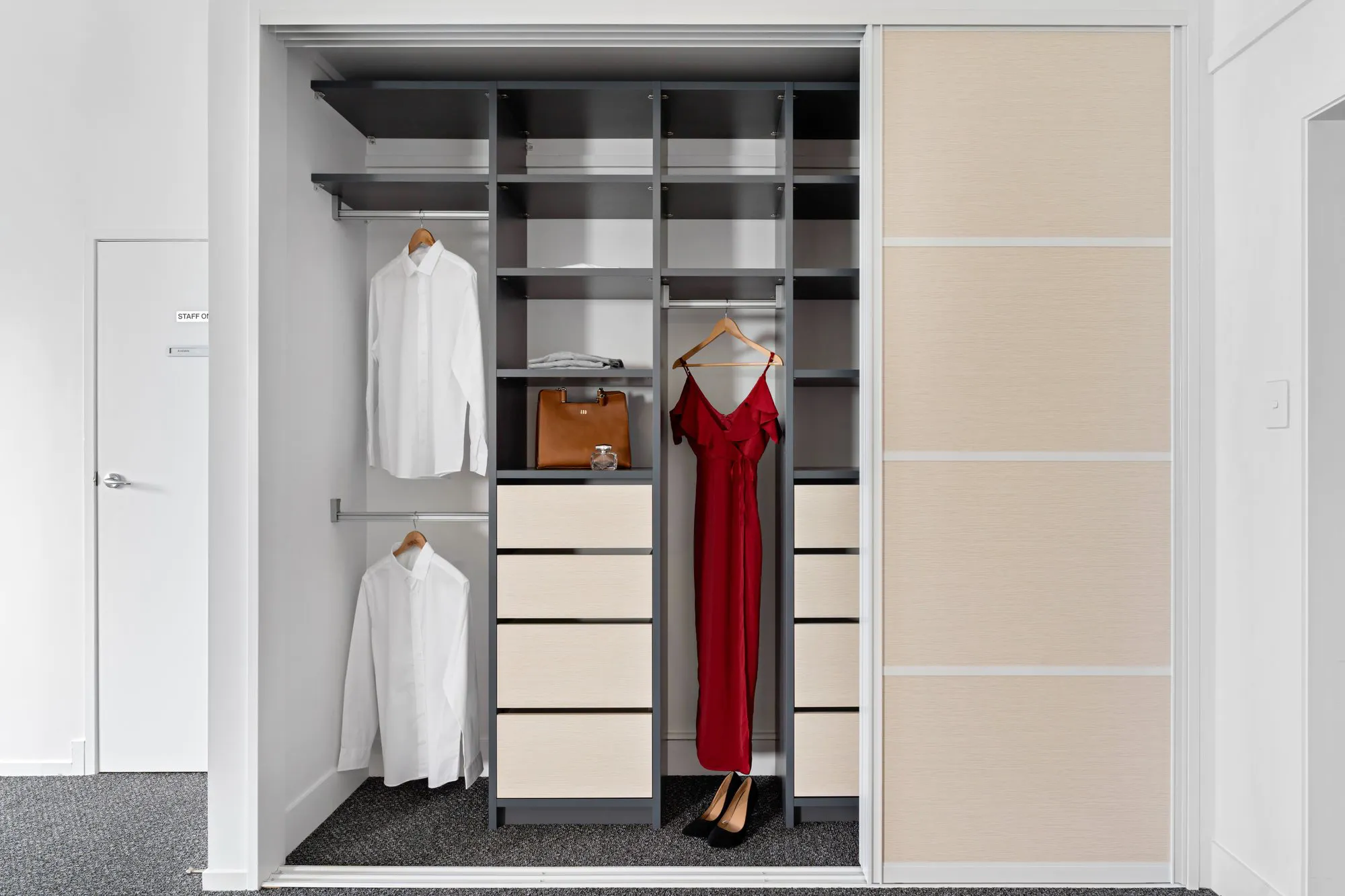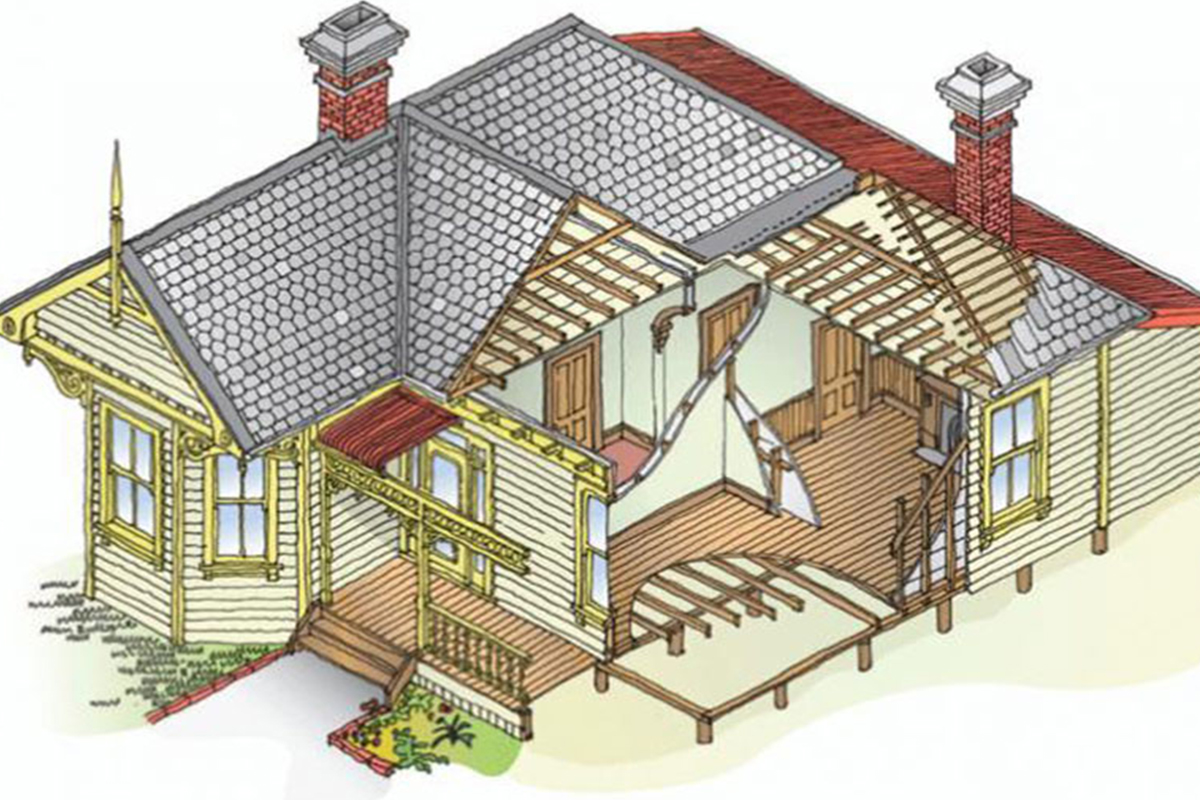Wardrobe design: DIY vs. professionals
Wardrobe design: DIY vs. professionals
Us Kiwis love to DIY – some may even say it’s in our DNA. And while a can-do approach to tackling home projects and renovations is admirable, we’re not all born tradespeople! Sometimes, even if we are not too bad with a level and a hammer, the problem is not so much talent, but time, resulting in friction and frustration in the household around lack of progress.
So, if a wardrobe installation project is on the to-do list for you, there’s a few things you should consider before making a decision about whether to give it a go yourself, or to call in a professional to take care of it for you.
We’ve covered off four key factors to think about before you pull those tools out.
1. Do you have time to DIY?
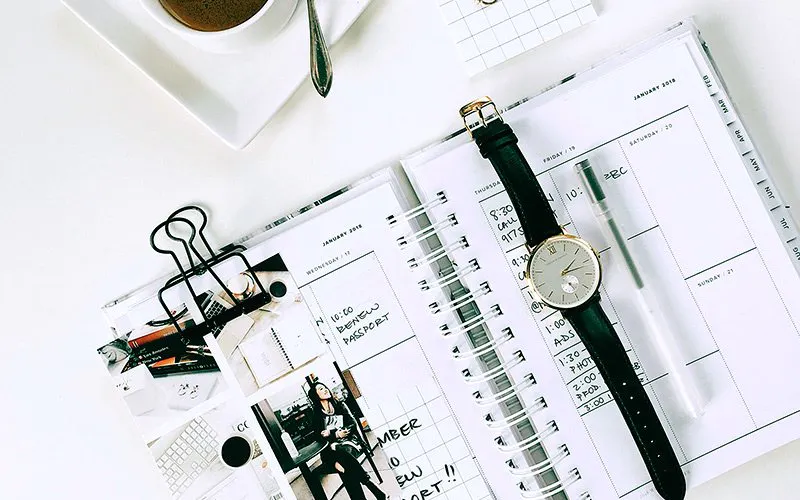
If either you or someone in the household is the handyman type, a DIY wardrobe probably doesn’t seem like too big of a task. In fact it could be the perfect project for a long weekend.
However, unless you are a builder by trade, the best way to go about this is to purchase a kit-set. And while it may seem like a simple project, even this may require more preparation than you realise. Take into account the time you will need to spend:
- Measuring: The correct measurements of your available space are essential so you don’t bring home a well-intentioned purchase that doesn’t quite fit.
- Choosing materials: Check out the quality of the materials closely. Sub-par melamine can warp over time and get damaged during installation. Make sure you check out any wire or hanging components for sturdiness too.
- Hunting for a great deal: Don’t confuse the cheapest option for the best value. At the same time, it pays to shop around to make sure you are getting the best bang for your buck.
- Constructing: Here comes the fun part. Do overestimate the time that constructing your new wardrobe will take. Rushing this part of the process will cost you in the long run.
- Troubleshooting: Allow for unexpected delays that may arise from pre-made parts not quite fitting your space, less than stellar instructions, and power tool malfunctions!
- Cleaning up: Wood + plaster + power tools = vacuum time.
If you think that in fact you don’t have the time, inclination or patience to go ahead with DIY, then call in the pros. While an initial showroom consultation with a sales representative will take around one to two hours, the rest is largely over to them. Once you have received and accepted a design and quote, you’ll need to also allow about a half hour for an in-home measurement, but otherwise there’s no need to invest anymore precious weekend hours!
2. Will you get the quality you are looking for?
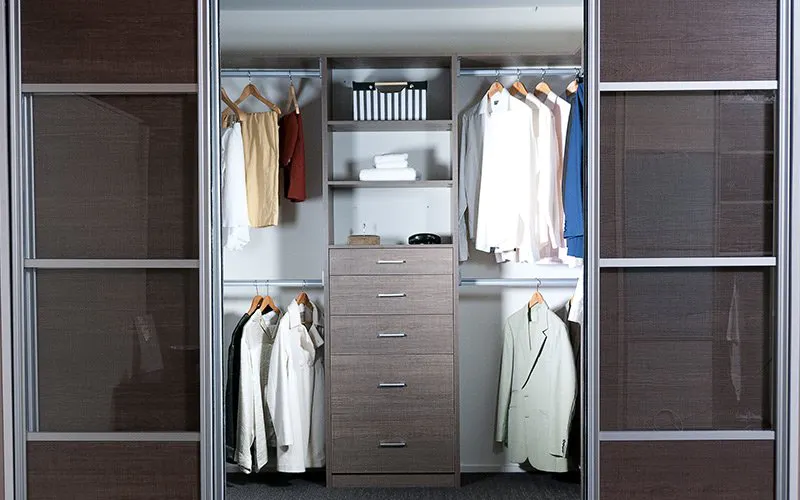
Think about the outcome and overall finish that you’re hoping to achieve. Is this a quick-fix or temporary solution? Or do you want a customised design that perfectly accommodates your needs?
If you’re keen on a kit-set, be sure to spend some time doing your research. Depending on how much you want to spend, the quality of materials and hardware included in kit-sets can vary between products. Generally speaking though, it won’t be outstanding. You will also have less choice when it comes to colours and size, as they’ll often be limited, standardised options. Where this could cause you issues is when you have an unconventional space to work with, or a particular colour scheme you’d like to stick to.
If you think you need something a little more bespoke, a reputable wardrobe company will offer a range of quality materials for organisers and doors that will be highly customisable, with options to suit your budget. The devil is in the detail, so spend some time in their showroom, reviewing their design options and the quality of their fittings, hardware, panels and mirrors, as well as the knowledge of the consultants.
3. Will you be able to make the best use of the space?

While taking a DIY approach does allow you some flexibility in design, you’ll need to get a really clear idea of the space required before you start mapping out your wardrobe or purchasing materials. If you are opting for a kitset, you won’t have a lot of room for customisation, so when deciding on which model to buy, have a think about your storage requirements and how you would like to optimise your hanging, shelving and drawer space.
We don’t all have an eye for design, and this is where the services of a professional wardrobe company really come in handy. After all, their main function is, in fact, design. Their job is to assess your individual storage requirements, take into account your available space and design a tailored solution for your needs. If you are renovating, your consultant will also be able to advise regarding any permits or wardrobe allowances your builder should take into consideration, to ensure you avoid any costly mistakes.
Bonus tip: get a guarantee

Remember, a DIY wardrobe might seem like an easy solution to your storage problems, but it may not result in a finish that works long-term, or withstands the test of time. With a professional installation also comes peace of mind – in the form of a guarantee. That means that if any issues crop up, you can pick up the phone and have them taken care of in a timely manner. Always use a reputable company with an established history, and consider their guarantee terms before making your decision.
So, will you be heading to the hardware store this weekend, or will you be handing this project over to the professionals? Hopefully the questions above have helped you get some clarity about the best way to approach your wardrobe project and the benefits that come with investing in the services of a professional wardrobe installation company.
If you have a project that needs a professional eye, get in touch! One of our representatives can take you through the best solutions for your storage requirements.
Other articles
April 7, 2024
The value of wardrobe storage in multi-unit residential interior design
A well-organised space is crucial to a sense of serenity at home, so creating the ideal storage solutions in multi-unit residential builds needs an expert hand.
December 14, 2023
The stress-free solution to wardrobe storage
As a feature of the home that we interact with every day, the importance of wardrobe storage should not be underestimated
Nothing found.
How much will a new wardrobe cost?
How much will a new wardrobe cost?
If you’re in the market for new storage, it’s likely that one of the first questions you’ll be asking is: how much will a new wardrobe cost me?
You’re not alone. Unlike a lot of other consumer products in the market, wardrobes are “price invisible”. In other words, thanks to advertising, most people have a rough idea of what consumer products are going to cost them – cars, refrigerators, mobile phones, furniture, clothes… But wardrobes? Nope. It’s not surprising that you’ve come in search of an answer.
Why the mystery?
The huge range of designs, sizes, colours, accessories, and technical complexities of the installation of a wardrobe can create a large disparity in pricing between one wardrobe design and another. For example, a walk-in wardrobe in an average house can cost anywhere from $2,000 to $15,000.
What makes this price range so broad, and how can you get an idea of what kind of budget you’ll need to set aside for your own wardrobe?
Well, it all depends on your unique storage requirements and the particulars of your available space. To help you get a better understanding of how far your dollar will go, here are six key factors to consider that will influence the final cost of your new wardrobe.
The images above demonstrate how wardrobes of the same size and basic layout could vary greatly in price. By using a different product range, adding more components, using colour panels, and including accessories, you would end up with very different quotes.
1. Space
Pull out your measuring tape, because the first place to start is to get an idea of what kind of space you are working with. We recommend you aim for a minimum of 1.8 metres for a reach-in wardrobe and 2.4 metres of wall space per person for walk-in wardrobes. 700mm depth will allow for hanging clothing, which can protrude as much as 600mm, with an additional 100mm for easy viewing and access.
Not surprisingly, the size of the available space will not only influence the required organiser components but also the dimensions of the wardrobe doors, which will both in turn affect the price.
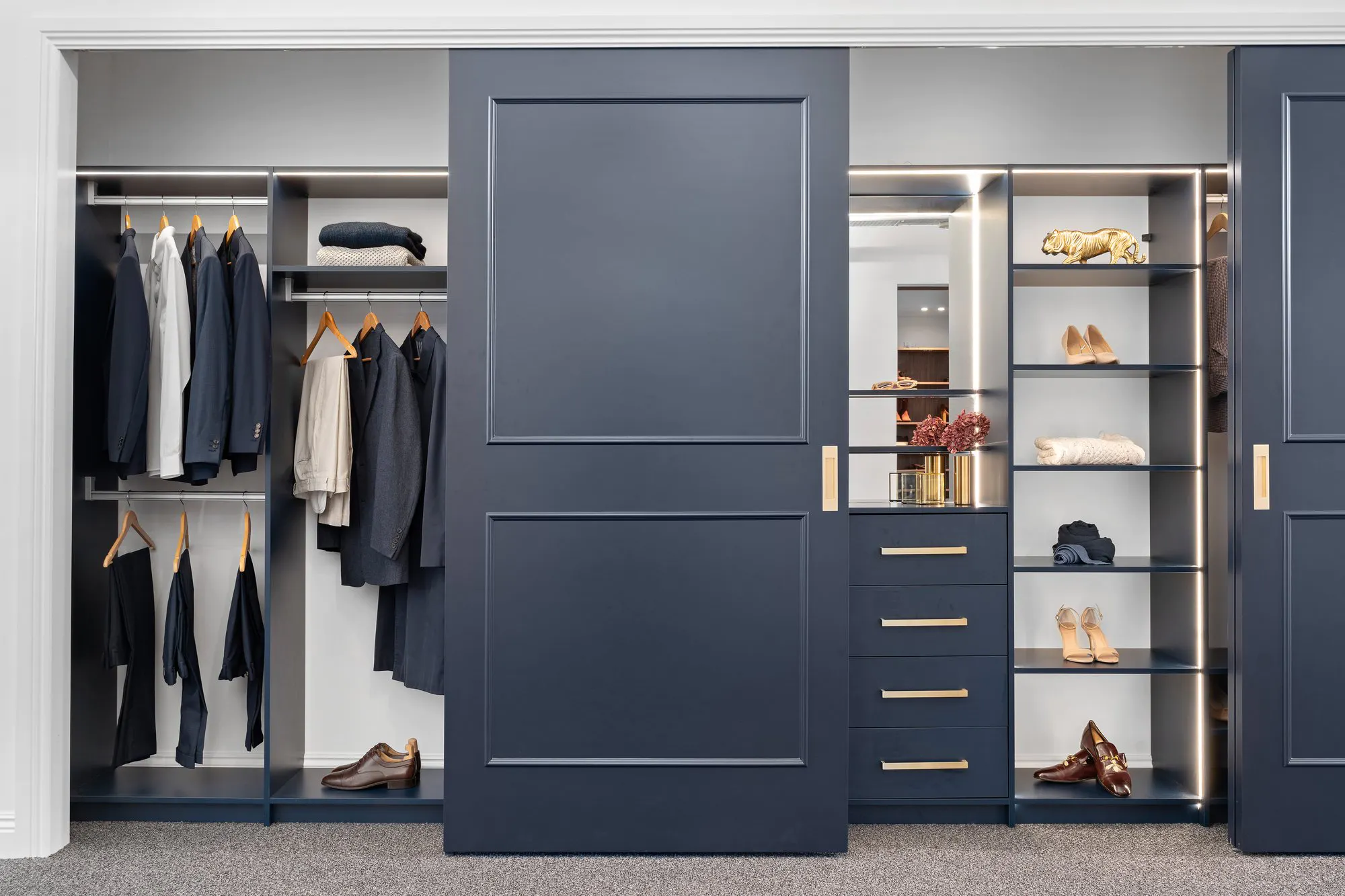
2. Drawers
Have you thought about the amount – and type – of drawers that you need?
How many do you need? How wide should they be? How high? How deep? Open-topped, push-to-open or with handles? All of a sudden, your pricing just got a lot more complex!
These decisions will be dictated by what type of garments you need to store – as well as what budget you are working towards. So have a look at your existing clothing and think about whether drawers are the best storage options for you, and how many you might require.
Undergarments including socks, hosiery, bras and underwear will typically be stored in a drawer, as well as certain types of accessories (scarves, belts) jewellery, and some clothing items (t-shirts, leggings, pyjamas)
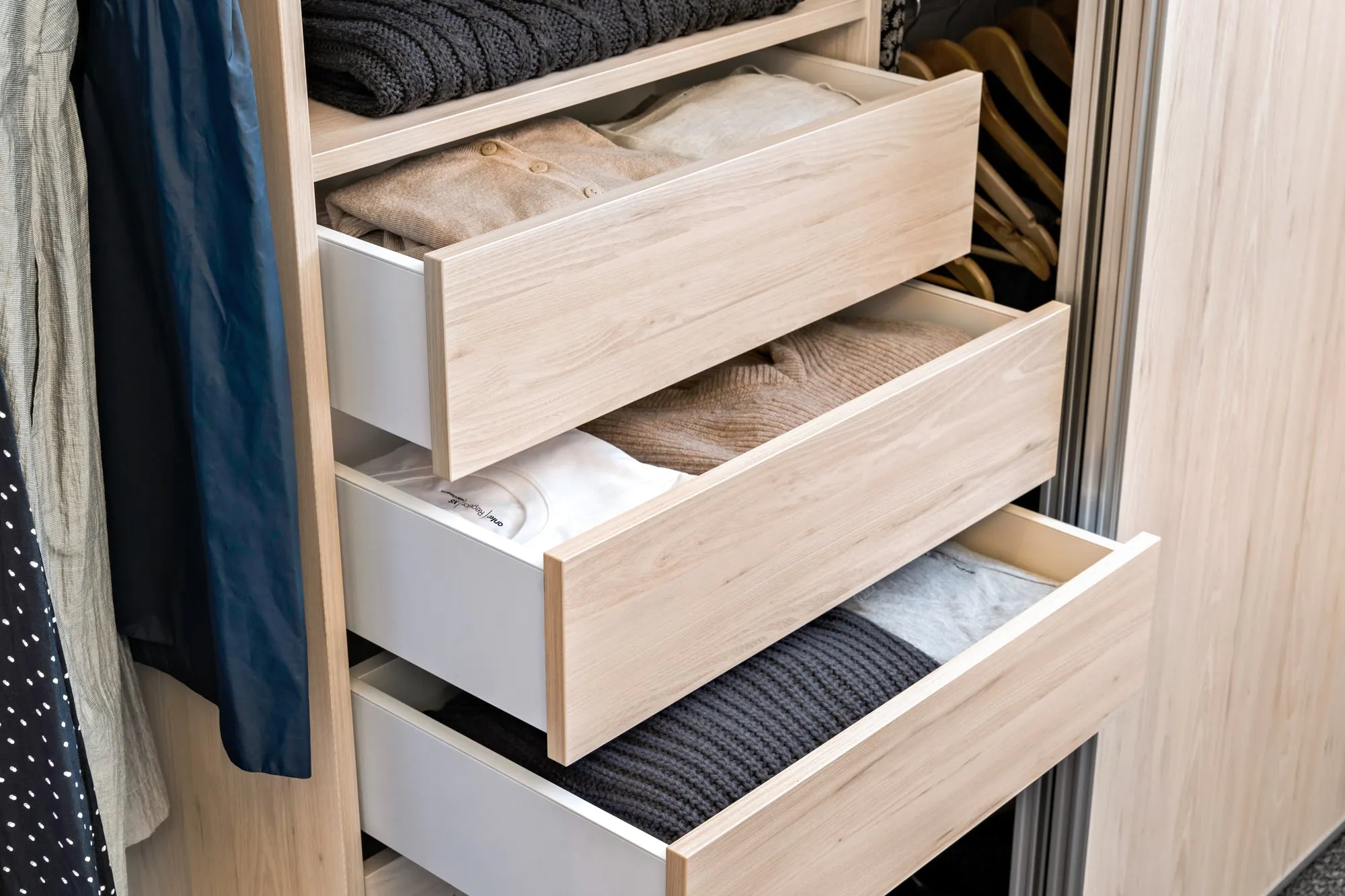
3. Shelves
Jeans, woollen jumpers and sweaters are best stored on open shelves. To give you an idea of storage capacity, you will be able to store two folded piles of clothing on 500mm or 600mm wide shelves, whereas on more narrow 400mm shelves you will only fit one pile.
Shelves have the potential to get a little disorganised, but by planning what will go on each shelf you can organise your space effectively – and avoid accidentally ending up with jumbled piles or other bits and pieces suddenly taking residence in your new wardrobe.
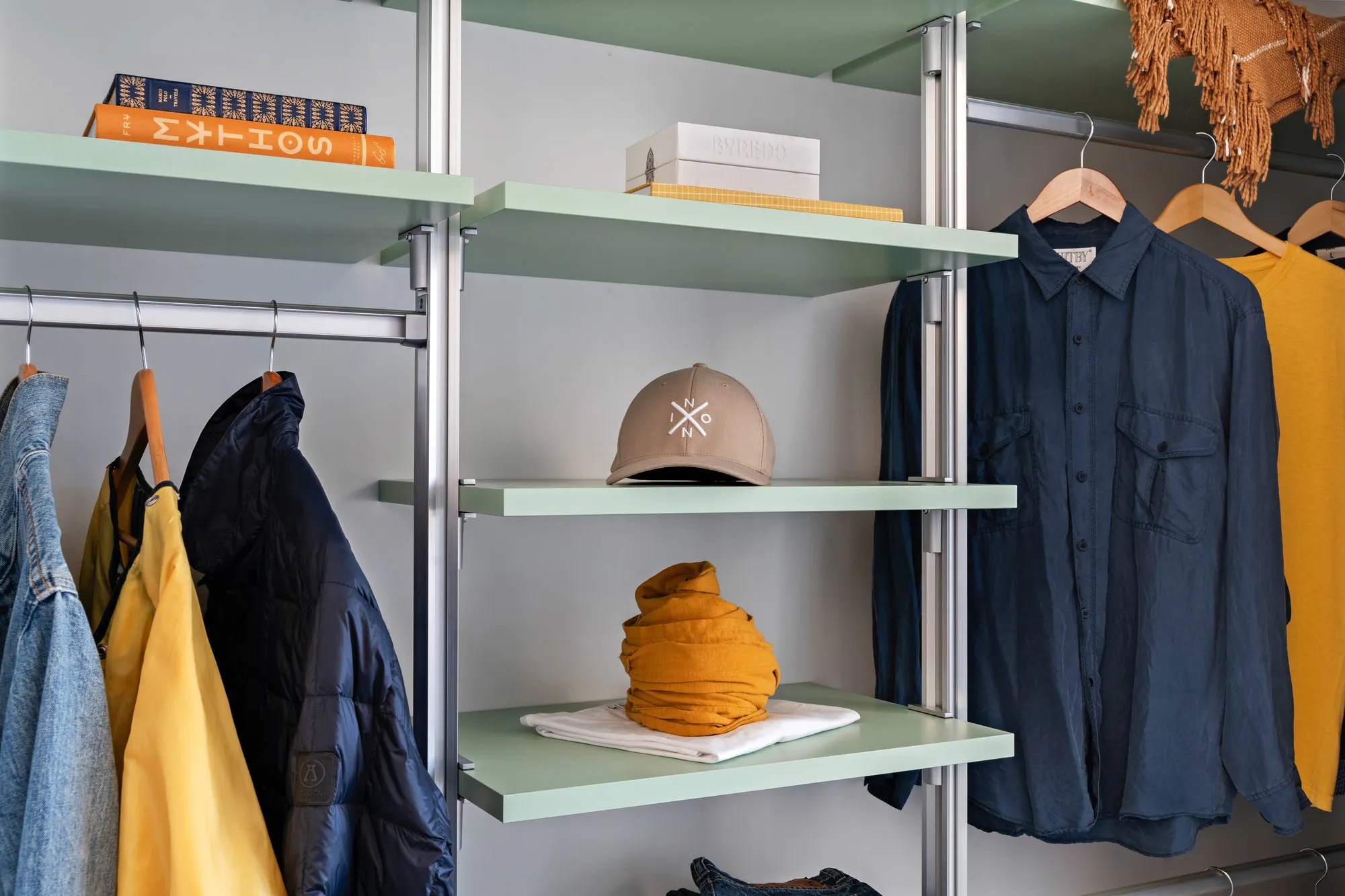
4. Hanging Space
To really optimise your hanging space, a double-hanging set-up is the way to go. This allows you to maximise clothes hanging space by having one rail above another (providing that an overall height of at least 2.1 metres is available). Long hanging space and 3/4 hanging are also handy for winter coats or full-length gowns, and can be set at custom heights depending on your requirements.
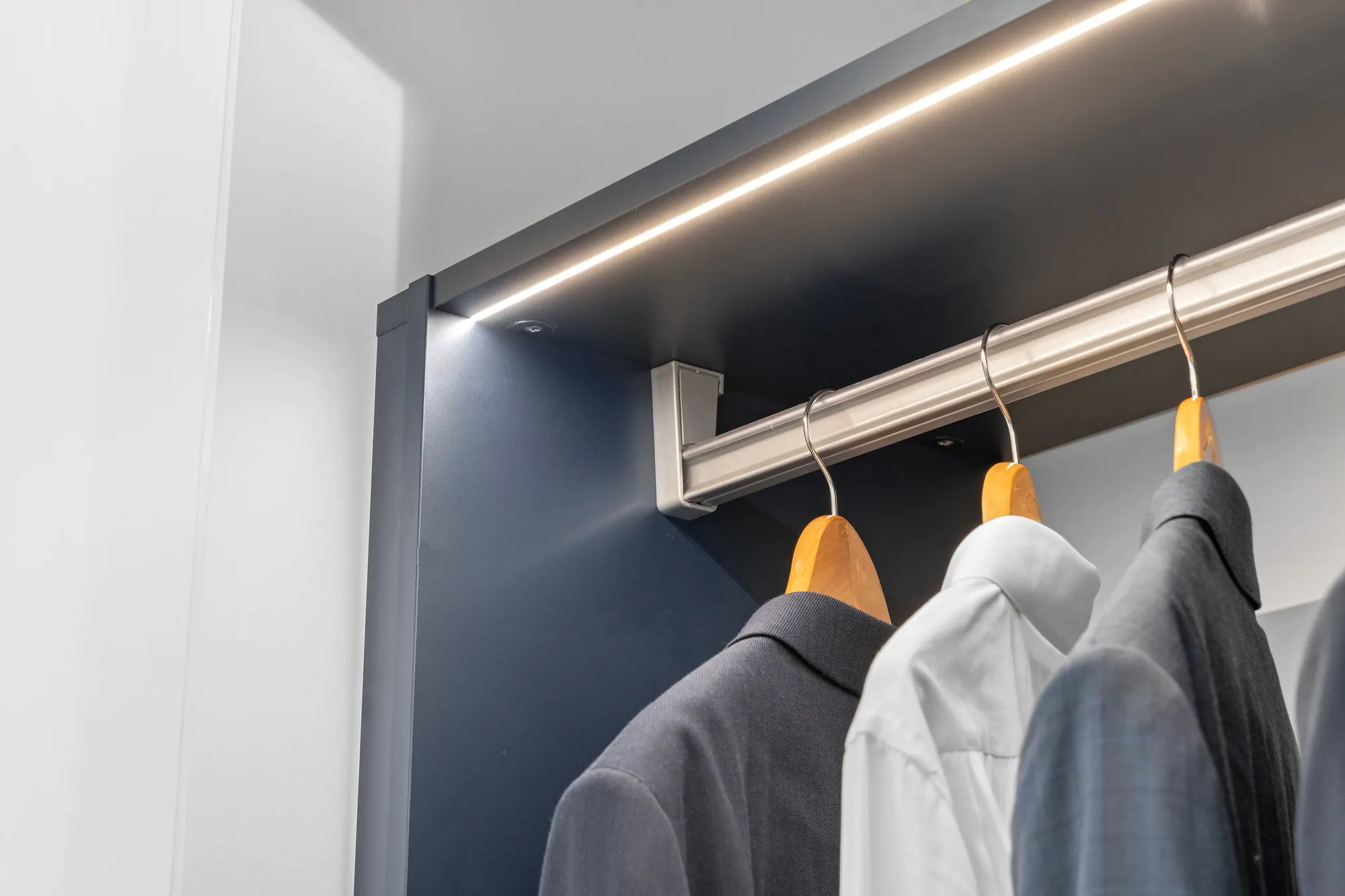
5. Accessories
Do you have an enviable shoe collection, an impressive handbag haul or a selection of ties for every day of the year?
Whatever your fashion indulgence, there are a number of available add-ons for wardrobes which can make organising your space and getting dressed in the mornings much more efficient – belt and tie racks, pull out trouser racks, specialised jewellery drawers, fold away mirrors – the list goes on. These add ons will affect the design and pricing of your wardrobe, but will also improve the overall organisation in line with your needs.
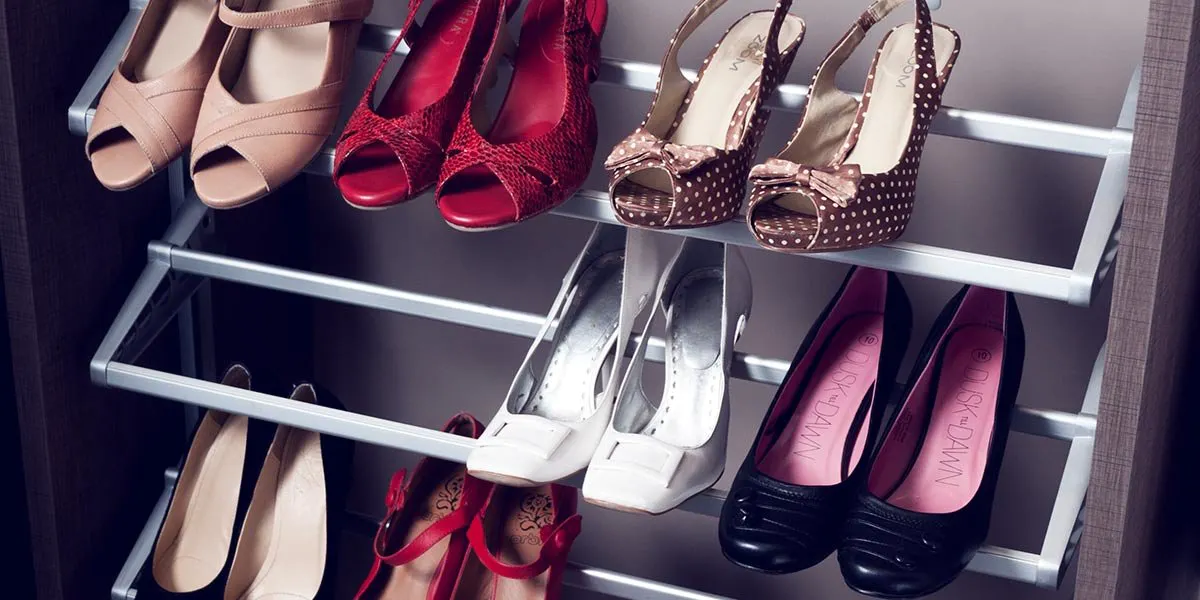
6. Installation costs
Installation costs should also be considered. It’s possible that you may need to employ the services of a builder before having your wardrobe installed. For example, if you need the opening to your wardrobe made larger to get full access to the available space, or if you need to create the wardrobe cavity by building out from an existing wall – so these costs will depend on how complex the space is that you’re working with.
Where do you start?
As you can see, there are multiple factors influencing the cost of a wardrobe, so it’s pretty tricky to give you a ballpark figure until we’ve had a chance to understand all of the variables.
Once you have discussed your particular requirements with your wardrobe sales consultant, you can then start to think about designing within the restraints of your budget.
At Boston, we have a wide range of storage and door solutions suited to all budgets. Organisers can range from the basic efficiency of our wall-mounted Select range, to the stylish elegance of the Innova range, which has the added benefit of easy dismantling if you were to move house. Our range of doors also includes options for all budgets, without ever compromising on quality and durability.
It’s good to keep in mind that whatever you decide, your new wardrobe is going to be a fixture – that is, a permanent component of your home. Quality fixtures are not only solving a problem (lack of storage space or un-practical wardrobe fitouts), but they will ultimately add value to your home. Making sure you choose a reputable company with experienced sales and installation teams will save you money in the long run – do it once and do it right.
If you’re ready to investigate further, we’d love to help. Get in touch today to organise a free consultation at our Grafton showroom.
Other articles
December 14, 2023
The stress-free solution to wardrobe storage
As a feature of the home that we interact with every day, the importance of wardrobe storage should not be underestimated
June 7, 2023
The elements of style from a personal stylist
Vlad Tichen talks us through perfecting your personal style and caring for your dream capsule wardrobe
April 17, 2023
Why choose sliding wardrobe doors
Wondering whether sliding wardrobe doors will work in your space?
Wardrobe systems in villas & bungalows
Wardrobe systems in villas & bungalows
Architectural design trends have come and gone, but the popularity of classic New Zealand villas and bungalows has stood the test of time.
Owning one of these character-filled homes has become somewhat of an aspiration for Kiwi buyers, with discerning homeowners coveting their antique distinction.
While they can require some extensive upgrades, renovating a villa or bungalow should be a labour of love, and worth the effort to restore some of the home’s most characteristic features, but with a modern twist. If you’re lucky enough to own one, you know how important it is to honour its history and original form when thinking about renovating.
A home steeped in history
Villas first started to appear in New Zealand around the 1870’s. Typical construction was almost entirely of timber with a metal roof. Its distinctive features include one or more bay windows and a decorated veranda or porch facing the street, sash windows, and timber weatherboard cladding – an iconic facade that many have since sought to restore or maintain. They typically had very high, decorated ceilings.
From about 1910, designers and builders started to incorporate bungalow features into New Zealand villas, creating what was to be termed ‘The Transitional Villa’. Typically, early transitional villas featured a pyramid roof (instead of the central valley roof of earlier villas). The roof was also of lower pitch and incorporated the veranda. Other identifiable features included exposed rafter eaves (replacing boxed eaves), wider eaves, and a reduction in veranda decoration that offered a little more understated character than its villa predecessor.
A contemporary comeback
It was around the 1980s that these houses saw a resurgence in popularity. While their exterior character remained endearing, most were in need of upgrading to improve energy efficiency and to reflect the standard expected of 21st century housing.
Since then, renovation of these houses has become a significant part of the building industry’s work, even bringing about businesses established to cater exclusively to these types of homes. After all, it is work that requires an experienced tradesperson who can identify and understand the home’s unique features and problems so as not to lose or compromise the elements that add to its distinctive character.
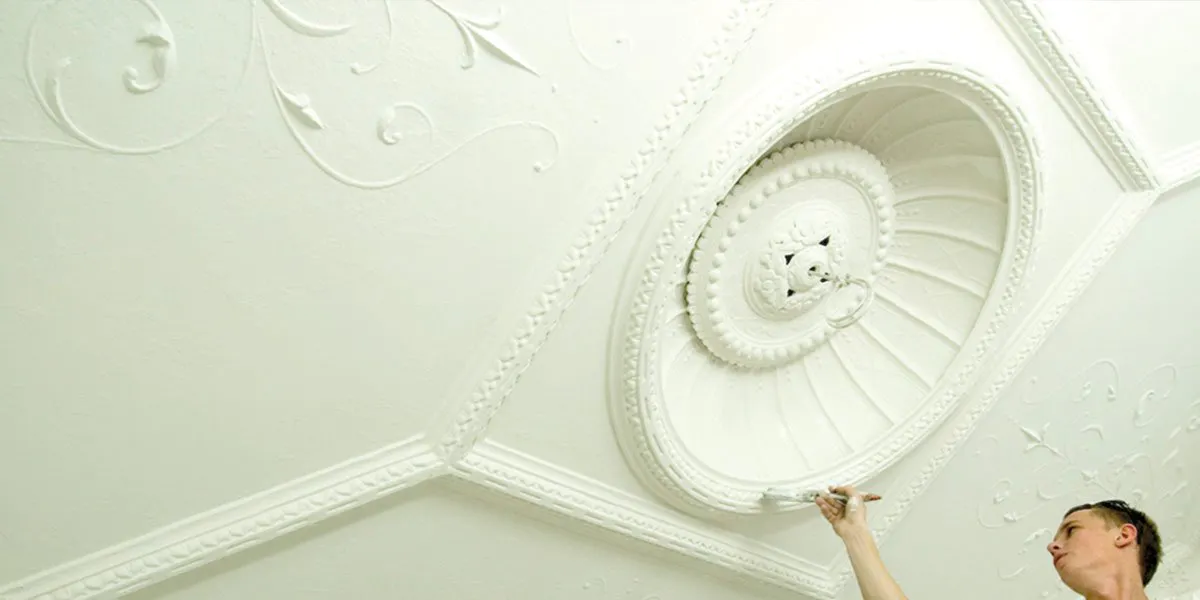
Modern-day challenges
One of the discrepancies between the houses of the past and the needs of today is storage. When these homes were constructed, storage was often relegated to outside. Houses were built on small posts, leaving a space between the ground and the floorboards which was used as under-house storage. Sections were typically bigger, allowing space for a separate garage and garden shed, which also provided plenty of storage opportunities. This meant that little importance was placed on interior storage – and consequently wardrobes.
Today, with section sizes shrinking and the number of possessions rising, storage inside the house is increasingly valuable. Many houses are in need of wardrobe creations (the term used to describe building out from an existing wall to create a wardrobe cavity), to enable residents to have a place to store their clothing. However, villa and bungalow style houses pose a particular challenge due to the style of the interior fittings and moldings.
A considered aesthetic adds value
The cardinal rule in renovations is “consistency adds value”. That is to say, a house that follows a determined style and has uniform fittings and detailing is ultimately more desirable than one that is mismatched (this is because a considered and consistent aesthetic shows attention to detail and a good sense of style, qualities desired by any homeowner). This is true of any style of house, but when you have invested in the character of a villa or bungalow, it makes sense that you would be especially interested in maintaining a style that is true to the original build.
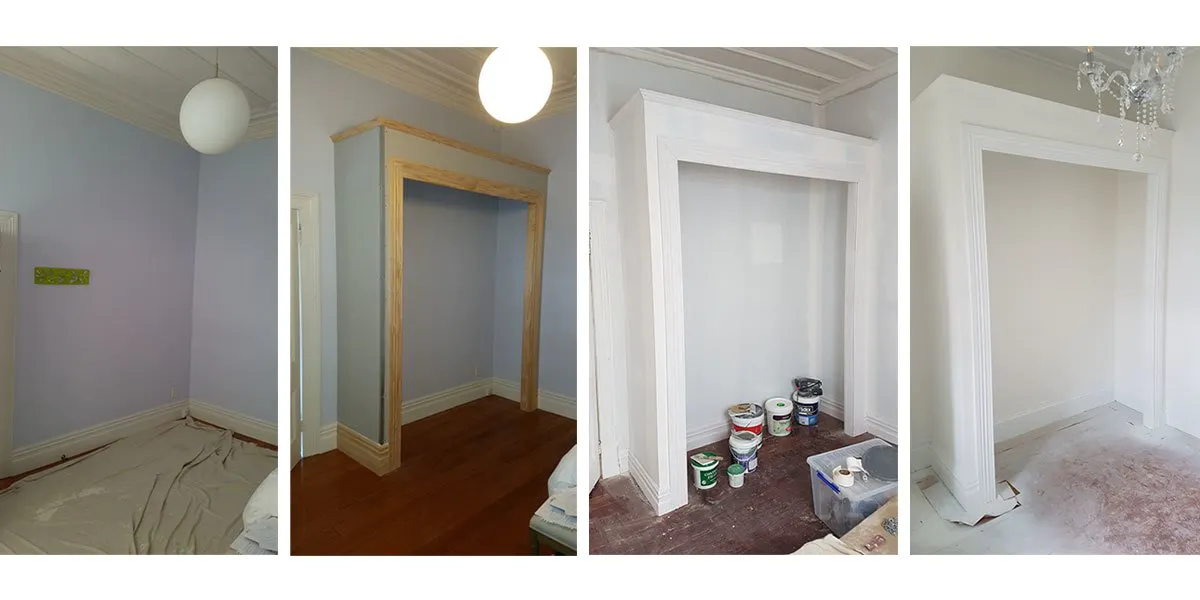
Boston’s commitment to consistency
At Boston we take into consideration the overall aesthetic outcomes for any home, and have a philosophy that wardrobe exteriors should always match the style of house they are built in, particularly in the case of villas and bungalows.
For this reason, our design consultants complete a “builder’s brief” as part of our service. This brief outlines technical details that need to be considered so that any building work required for your new wardrobe will result in a seamless finish. We can then either work with your own builder to complete the requirements or connect you with a tradesperson from our trusted network.
Your home is likely your most valuable asset, so it is important to always take steps that will lead to not just maintaining, but increasing its value. Over the past 30 years, we have had the pleasure of working with thousands of homeowners in Auckland, many of whom had original villas and bungalows to do just that. We pride ourselves in having achieved seamless results for storage solutions that complement the character of these classic Kiwi homes. If you have a renovation project that requires an experienced eye, get in touch with us to discuss.
Other articles
April 7, 2024
The value of wardrobe storage in multi-unit residential interior design
A well-organised space is crucial to a sense of serenity at home, so creating the ideal storage solutions in multi-unit residential builds needs an expert hand.
December 14, 2023
The stress-free solution to wardrobe storage
As a feature of the home that we interact with every day, the importance of wardrobe storage should not be underestimated
Nothing found.

